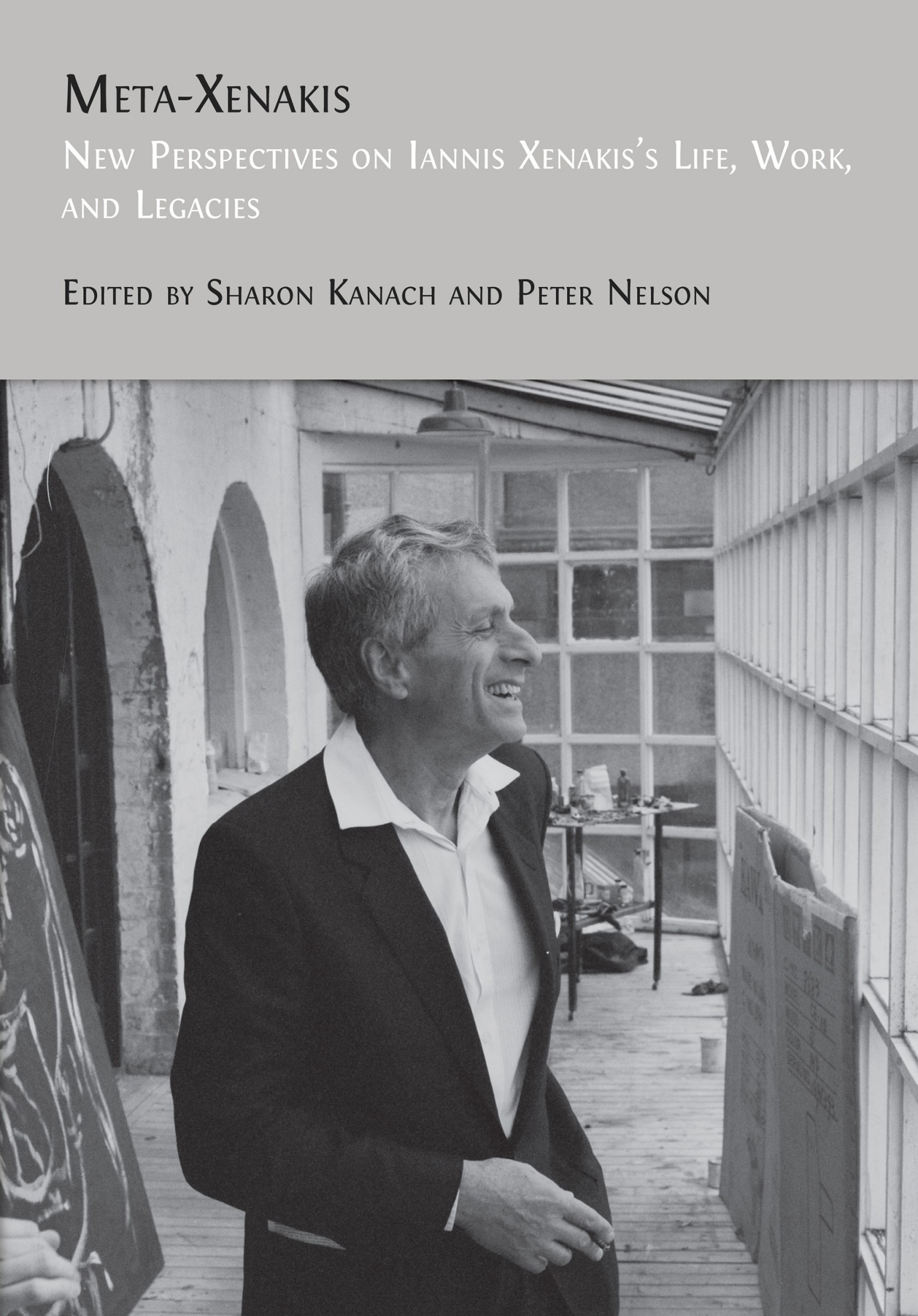29. Iannis Xenakis, Inventor of Music—Composer, Engineer, and Architect: The Voice of the “Inexpressible” and of “Revelation”
Cândido Lima
© 2024 Cândido Lima, CC BY-NC 4.0 https://doi.org/10.11647/OBP.0390.31
It is not as a musicologist, architect, historian, mathematician, engineer, physicist, or researcher that I write this text but as a composer and witness over several musical decades to one of the greatest creators in the history of music, Iannis Xenakis. I heard Olivier Messiaen (1908–92) on a radio program in France define Xenakis as “philosopher, mathematician, logician, poet, and musician not like the others.” Many years ago, I proposed an inversion of that assertion: “poet and musician, philosopher, mathematician and logician, different from the others.” In fact, Xenakis characterized what was beyond mathematics as “art,” “music,” “inexpressible,” and “revelation.” The composer often succinctly replied to those who labeled him a mathematician: “I am not a mathematician. I don’t invent theorems!”1
Itinerary—Discovery—Mathematical Dialogues
I cannot recall the first time I heard Xenakis’s music; was it before going to military service, or later, before going to Africa in 1965–66, or was it after coming back from Africa in 1968? I do not remember how or where I first encountered the composer’s writings or writings about him. I know however that he was already a myth to me, he who was known as the “mathematician who made music.” I was fascinated by his music, and the impression some works had on me (the first being Nuits (1968), at the 1968 Gulbenkian Festival in Lisbon, perhaps…), coupled with the subjects I was studying at the time at the Philosophy Faculty in Braga, Portugal. Those impressions created a bridge on which I still stand.
I acquired three books by composers around that time, found abandoned on bookshelves in the city library of Porto: Musique, Discipline Scientifique (1968) by Pierre Barbaud (1911–90), Musiques Formelles (1963) by Xenakis, and Penser la Musique Aujourd’hui (1963) by Pierre Boulez (1925–2016). These readings gave rise to dialogues with several members of Braga’s illustrious faculty.2 Further readings and study of subjects and authors that Xenakis cites in his two books Musiques Formelles and Musique. Architecture (1971) ensued. Around this same time, a year when I was studying molecular genetics, Xenakis wrote a text about his work Eridanos (1972) which has renewed relevance today in relation to the Covid pandemic: “[…] The central idea in this piece is the construction of organisms in the image of polynucleotide genetic chains. Here, only a fragment of the desoxyribonucleic acid (DNA) is considered, formed by a five-carbon sugar and a phosphoric acid. The elements H(ydrogen), O(xygen), C(arbon), P(hosporus) are presented by means of fixed sets of intervals which permute.”3 Such statements coincide with the notes I’ve recently found that I took during my classes at the time and that touch on the scientific world of those who advanced with revolutionary techniques that led to the creation of vaccines to combat the COVID-19 virus.
I lived in parallel worlds that ignored each other: on the one hand, in the tradition of the conservatories and private schools where I had been taught and where my professional and institutional activity was centered, and on the other hand, in solitary study of modern music and its astonishing inventions to which these books bear witness, to this day. What I wanted was to understand the relationship between mathematics and this extraordinary music that by then I already knew a little better, by virtue of the 1970 Darmstadt summer course I attended (thanks to a scholarship from the Gulbenkian Foundation), led by Karlheinz Stockhausen (1928–2007). In the following Darmstadt session, in 1972, Xenakis appeared, and his music left the hundreds of participants petrified. Nomos Alpha (1966), performed by cellist Siegfried Palm (1927–2005), with both performer and composer present, received endless applause! In one of our chance hallway encounters, I asked Xenakis which of his works he considered his most important. He paused, hesitated: ‘Metastasis (1953–4)… Achorripsis (1956–7) … Herma (1960–1)…” He had already composed brilliant works like Persephassa (1969), Oresteia 1965–6), Eonta (1963), far from his research on purely stochastic music (except for Eonta). His timid answer focused on philosophical and theoretical criteria and less on subjective criteria of aesthetic valuation; and this remained a constant in his attitude towards art throughout his career. Also, in Darmstadt in 1972, my works Projecções (1969–70) and Paúis/Impressões do Crepúsculo (Fernando Pessoa) (1967) were played, about which Xenakis made some comments, using the expression “very poetic work,” terms not very characteristic of his vocabulary. He generally replaced such expressions with “interesting” or “uninteresting,” and never called a musical work “beautiful” or “ugly,” but measured “the level of the sound’s intelligence.”4
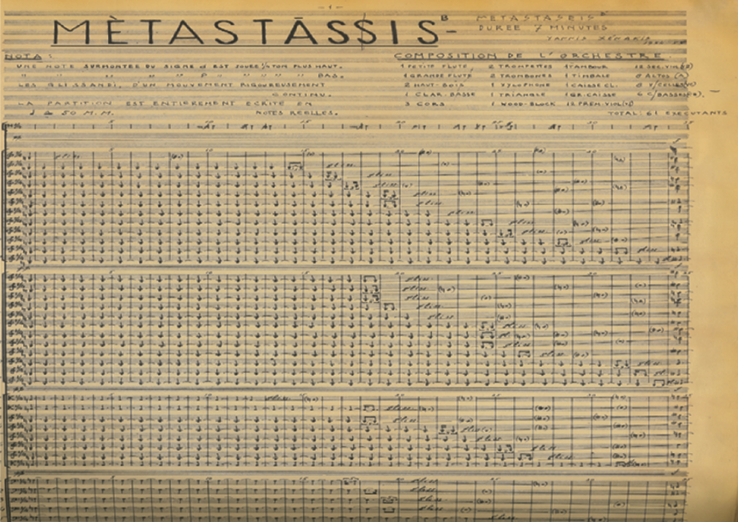
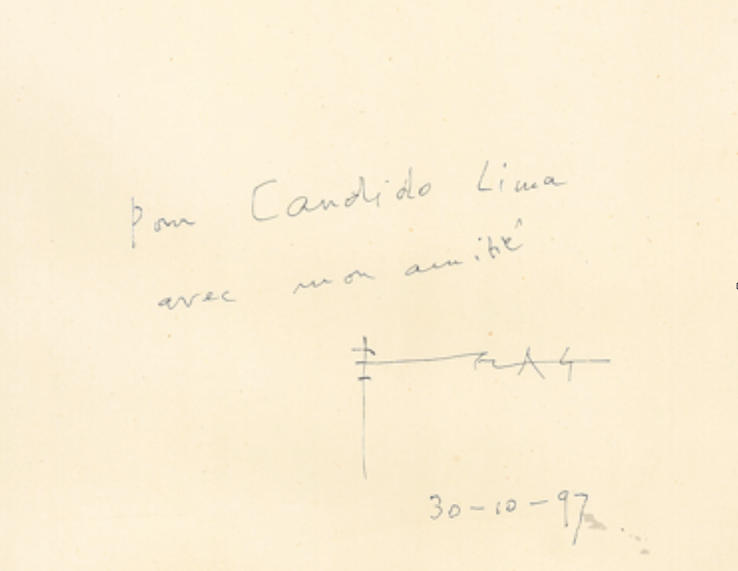
Fig. 29.1 (a) Score of Metastasis, in a copy offered to the author in 1997 by Xenakis, with (b) autograph (curious spelling of the title, coming from the composer himself!). Photo by author (2024).
Soon afterwards, in 1973, our paths crossed again at the La Rochelle Festival in France. During one of the rehearsals of this festival (with the conductor Michel Tabachnik), I sat next to him and said calmly: “I’ve learned you are going to Lisbon, invited by the Gulbenkian Foundation, next June. I’m President of the Musical Youth from Braga, a city just north of Porto. Could you possibly come to meet with the young students? I must tell you though, we have no money!” He replied, “For young people, maybe […] How much money do you have?” “I don’t know.” “How about 100 dollars then?”
A few months later, many music students from Braga, Porto, and Coimbra gathered in Cinema Trindade for an unforgettable “Meeting with Xenakis,” which the Porto and Braga Delegations of the Portuguese Musical Youth organized. Dr. João de Freitas Branco (1922–89), a musicologist and graduate in Mathematical Sciences, was the ideal travel companion for Xenakis between Lisbon and Porto, and he expressed his enthusiasm at length, in the newspaper article he wrote at the time: “The interlocutor was of good quality. He insisted where he should, and Xenakis went so far as to talk about homomorphism.”5 The proposed theme was: “Current problems in music composition”6 with excerpts of recordings of works by the composer. Several years later, Xenakis told me about the quality of the participants in the Trindade Cinema, distinguishing them from those from Lisbon, another lecture which occurred a few days later (which I also attended): “I was struck by the seriousness, maturity of thought and responsibility of the students from Porto, Coimbra, Braga. It was a joy!”7
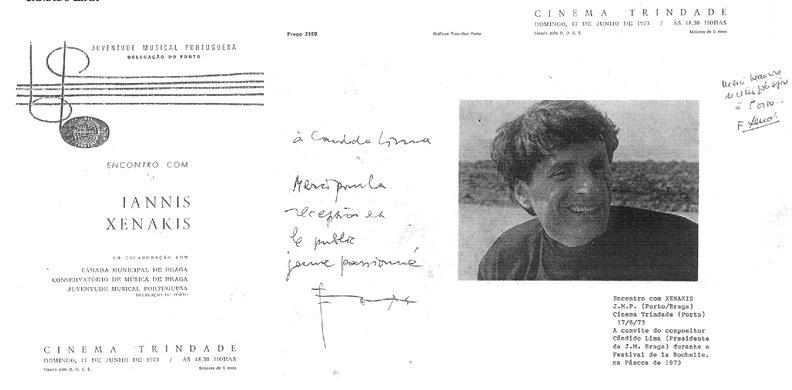
Fig. 29.2 Autographs of Iannis Xenakis and his wife, Françoise Xenakis (1930–2018), during the “Meeting with Xenakis” at Cinema Trindade, in Porto, promoted by Juventude Musical do (Musical Youth of) Braga, of which the author was then President, in collaboration with the Juventude Musical do Porto. Author’s private collection.
Later in 1973, I organized an excursion for students, filling two buses, with the support of the Gulbenkian Foundation Music Services, to hear works by Xenakis and the Portuguese premiere (!) of Claudio Monteverdi’s (1567–1643) Orfeo (1607). This was the first of the school field trips sponsored by the Gulbenkian Contemporary Music Encounters.
It was certainly due to the sympathy that the remarkable Dr. Branco had for the music-mathematics binomial characteristic of Xenakis, that in 1975, as Secretary of State for Culture, he gave the green light to my application for a grant to study with Xenakis in Paris. It was then and there that the true story of my proximity to this great composer began, and that lasted until his passing over twenty-five years later. In our innumerable meetings—that were sometimes brief, sometimes long, over the phone or in his studio in Paris near Pigalle—I got to know more about the man and the composer, his nature and his work, his habits and his music. My study plan included studies in computer science and music informatics, electroacoustics, and ethnomusicology. Xenakis personally oriented me to the Groupe de Recherches Musicales (GRM), and recommended me specifically to Pierre Henry (1927–2017). I also attended mathematics classes on subjects applicable to the arts and music taught by Professor Bernard Girard (b. 1938) (at the Tolbiac Faculty). Girard later confessed in writing that from our dialogues were born not only clarifications for himself, but also the extension of his own mathematical reflections to include creation, devising a new computer course. There we experimented with Fortran (punch cards), anticipating the musical computer system created by Xenakis: UPIC—Unité Polyagogique Informatique du CEMAMu (Centre d’Études de Mathématiques et Automatique Musicale, Xenakis’s research lab). Furthermore, I also followed a class on mathematical techniques as applied in the works of Xenakis with Patrick Saint-Jean (b. 1949). But mainly, I attended Xenakis’s seminar Formalisation et Axiomatisation de la Composition Musicale et des Arts Visuels (Formalization and Axiomatization of Musical Composition and the Visual Arts) at the Paris 1 Panthéon-Sorbonne University. There, the composer focused his attention on mathematical tools, while, in our personal meetings in his studio, he insisted on not wasting time on the past, on philosophy or mathematics, nor on anything other than music. “Compose! Compose! You must write! Especially chamber music, it’s easier to get played. Just make music!”8
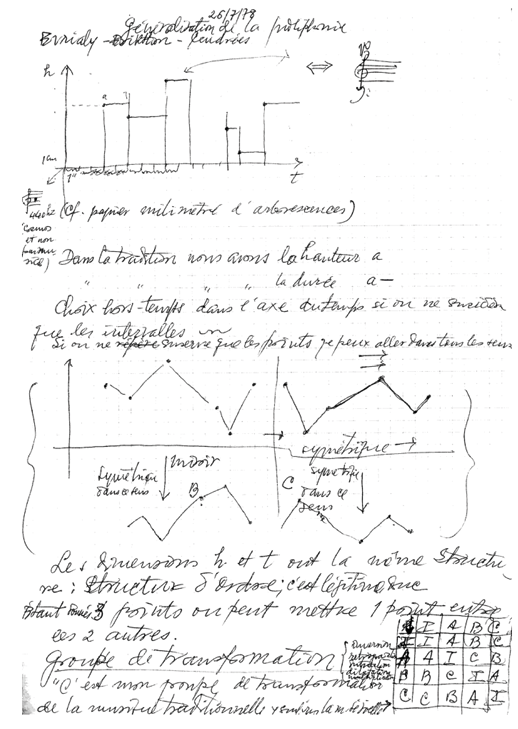
Fig. 29.3 Manuscript by the author, note on arborescences.9 Seminar by Xenakis at the Paris 1 Panthéon-Sorbonne University, 1978. Author’s private collection.
Encounters with Xenakis
From stochastic music to intuitive music, from symbolic music to his great incidental music for the Greek classics, from huge symphonic murals to fulminating works for orchestra with chorus, from unique and unusual melodies to exciting rhythmic sequences, from extraordinary abstractions to hypnotic concrete sound and rhythm, from the purely rational man to an extraordinarily sensitive one, from his guarded solitude to gigantic, electrifying, and inimitable music… I was so fortunate to make a fantastic and affective trip, which was a kind of embrace with the composer, with whom I spoke for the last time in his home in Paris at Rue Chaptal, just a few months before he died.
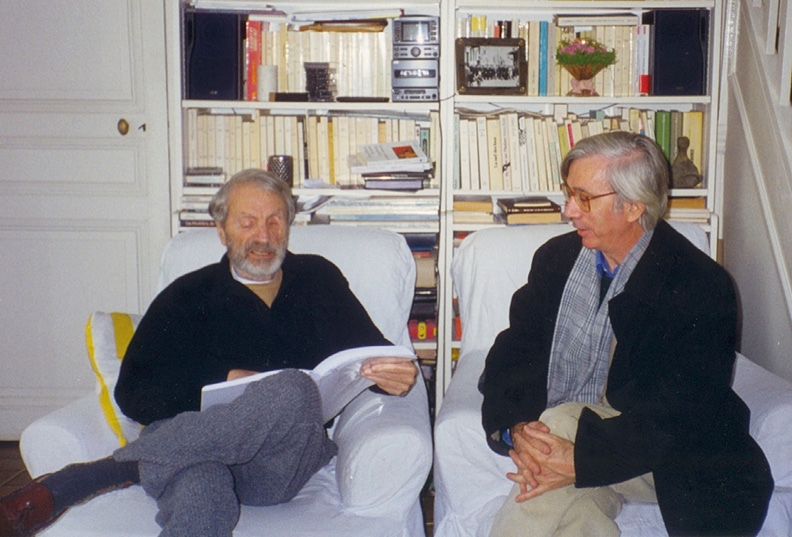
Fig. 29.4 Iannis Xenakis with author, at Xenakis’s home in Paris, 2000. Photo: Françoise Xenakis. Author’s private collection.
The following pages are based on personal documents where his voice and some of his ideas were recorded, some that he transmitted to me for specific occasions, photographs that I took myself in his studio in Paris, manuscripts and notes I compiled by the thousand over the years, and many photocopies of his archives I made with the composer’s permission. Many times, his serene and resigned voice went on in conversation as if nothing he did had any importance. The voice for his music disappeared after O-Mega (1997) for percussion and ensemble, which he himself declared would be his last.
Demystifying interviews with a composer-inventor of sounds by necessity, a user of mathematics as a contingency, a composer of “rare events,” using language from the theory of probabilities, the history of music, and the history of human thought is no easy task. Below is a subjective and personal choice of thirty years of meetings in Paris, Porto, Darmstadt, Lisbon, La Rochelle, Zurich, in direct contact with his voice and the musical manifestations of the theoretical and artistic intuitions of a rare inventor, a revolutionary, a rationalist, and a classical poet of Ancient Greece or of the Renaissance.
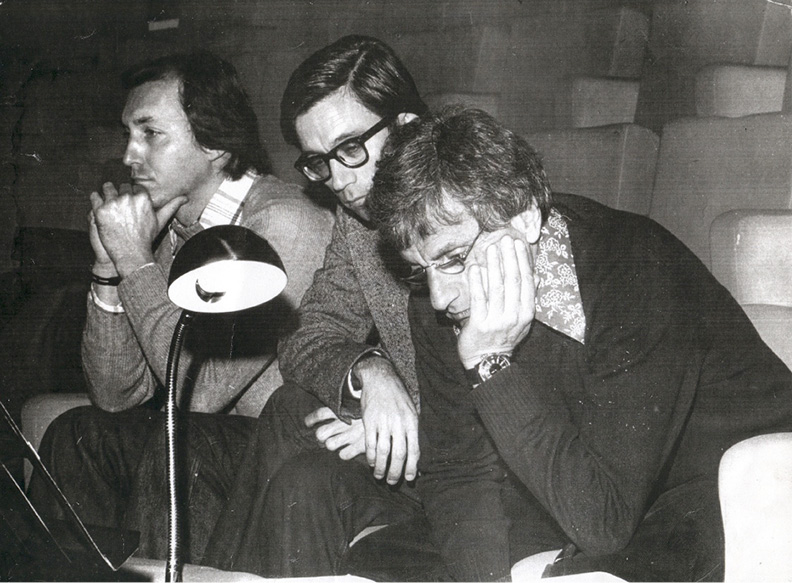
Fig. 29.5 During a rehearsal of Xenakis’s Synaphaï (1969) in 1977. Théâtre de la Ville, Paris. Xenakis, the author, Yves Cayrol, who at the time, was Pierre Boulez’s assistant conductor for the Ensemble Intercontemporain. Photo by author (1977).
Two interviews were conducted in Paris at the composer’s studio (1984), and another between Porto and Paris (by telephone, at the RDP-Delegação do Norte studios) (1991). The first was published in the short-lived magazine MÚSICA, and the second interview addresses questions for the seminar I organized at the French Institute in Porto under the title Créativité et Modernité (Creativity and Modernity). For the purposes of this chapter, excerpts have been chosen to highlight seven specific topics: Creativity, Modernity, Process, Non-European music, Brahms, Defining music, and Portugal.
Creativity
IX: I think that creative capacity, creativity itself, is universal not only among mankind but in all living beings, including plants and even in the subatomic world. No one has thought about the subatomic world yet, it hasn’t been demonstrated; but I think it is there also, from the supposed “big bang” until today. […]
When it comes to music, as in all fields, there is the question of education. The past, with its rules that were discovered, founded, created over generations by music schools and other art schools and are imposed on the following generations…these inhibit one’s creativity. It is necessary, especially from puberty, for individuals to remove themselves as early and as far as possible from these things. […] That is how one trains creativity. In music it is the same thing; […] it is difficult for us to be free, not only from the rules of composing pitches, melodies, harmony, structures, movement, but also for listening. Simply listening. But actually, I don’t like to listen to music because it informs your thinking. You need to keep your thoughts unformed!
Modernity
IX: There is so much talk today about modernity that it has lost its value. And what does postmodern mean? Nothing more than art that takes a lot from the past. And this means that, on the level of creation, it is very weak.
Process
CL: Is there always a mathematical structure in your work?
IX: I’ve forgotten the mathematics. I’m much freer now. But mathematics is always in my head; I have probabilities running through my veins! Mathematics and theoretical things allow you to experience things, and once you have experienced them, it becomes a part of your flesh. And then you forget about mathematics and all that because, what counts is how you function, and this is something that the composer must never lose sight of. If he does, he’s condemned.
We are but DNA’s overcoats and DNA has no individuality, although everyone’s DNA is different from other DNAs, but without specificity. You should read Dawkins’s River out of Eden!10 […] In art, there are ways of thinking that are close to other parts of human thought. Because every brain is unique, one can do, for example, mathematics with physics, music, painting, even politics: it’s always there. Whether it’s developed or not depends on the person.
CL: To what extent do operations—rotations, permutations, etc.—enter your music?
IX: It can be done manually, but it’s not necessary, because a musician’s imagination should exceed any calculations. It’s simple as that!
CL: Again, what are the compositional techniques that are present in your music? I just gave a student Anaktoria (1969) to analyze. There’s no mathematics there?
IX: It’s intuitive, that’s all!
CL: But what about other technical approaches that have nothing to do with mathematics?
IX: I can’t tell you that! I’m not aware of those. But if one day you want, you can find things in these files! (Spreads his arms wide open showing his shelves of personal archives)
CL: I’ve been here before, but for looking for other things. I can come back…
IX: If you have time to lose…
CL: To gain, you mean, of course! In every piece isn’t there a cell, a pattern, or a gesture…?
IX: There is not a cell, nor a motif; there is a beginning. I start working, and then, little by little, it gets knotted, or it gets untied, it depends. And it goes on like that until the end of the work. For some years now, I have been writing relatively short pieces.
CL: Yes. Do you know why?
IX: Because I don’t have any ideas, or I think I’ve said what I had to say in less time. A piece of music must not be a calculated thing; it must be strong. So, what does strong mean? It has to be intelligent. What does intelligent mean? That it makes a certain impression. I don’t think in terms of the impression it can make on the public because I don’t know them, and I don’t care to know them. But as far as I’m concerned, I do something that makes an impression on me. But it doesn’t always work! I think I’m making an impression and, in the end, it’s nothing. Or on the contrary, I don’t think something will make an impression, and it does. See, it’s completely free, and completely convoluted!
CL: Does technology, electroacoustics, computer science intervene even in an unconscious way in all this?
IX: Yes, maybe, but not in a conscious way, because I work with instruments in an instrumental way; that is to say, there are no interpolations of electroacoustic thoughts. When I do electroacoustic music, there can be orchestral interpolations, but it’s completely underlying. That’s what I believe.
CL: Yes, unconsciously, or rather on a subconscious level.
IX: That’s right, yes, unconsciously, or even consciously. If you’re building a sound, it’s the sound that counts. Whereas in the orchestra the sound is given, unless you make combinations of sounds that are not. That’s why recently I’ve been writing double sounds for instruments that are mixed with other double sounds; they are more complicated, and richer.
CL: Does it create masses?
IX: It creates new textures. […] I can’t imitate myself; I don’t want repeat what I’ve already done. I need to find something else that’s interesting, and that’s very difficult to do!
CL: On the musical level or on the outside-time level?
IX: On the musical level, but also mixed with thinking, because no music can be differentiated from the more abstract thought behind it. […]
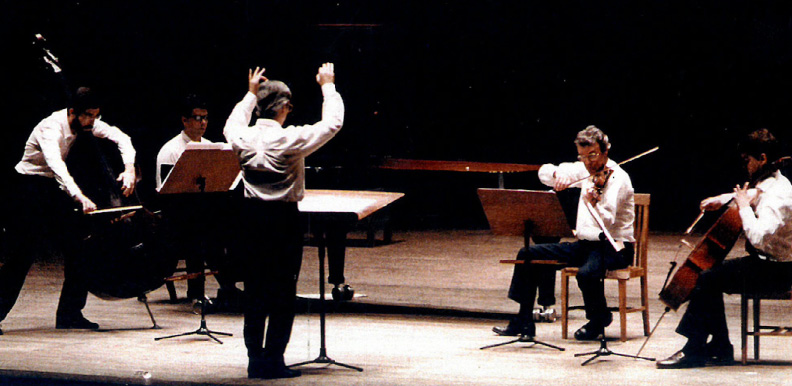
Fig. 29.6 Performance of Morsima-Amorsima (1962), aka ST74-1,03-07-62, with the explanation: “Stochastic, first work calculated by the ‘electronic brain’ 7090 IBM—on July 3, 1962 (1956–62),” performed by the Grupo Música Nova, in the Grand Auditorium of the Gulbenkian Foundation in Lisbon, during the Encontros Gulbenkian de Música Contemporânea, 4 May 1988; Alberto Gaio Lima (violin), Paulo Gaio Lima (cello), Adriano Aguiar (double bass), Francisco Monteiro (piano), Cândido Lima (conductor). Photographer unknown © Gulbenkian Foundation, reproduced with permission.
CL: You have an enormous concern about the connection and cohesion between the abstract and the concrete.
IX: Yes and no. I don’t make a separation. […] Don’t forget that for a long time I was an engineer and an architect. As architect, you have to build; and as an engineer, you have to make it buildable. And, you have to make the people who live there happy. So, they are quite parallel.
CL: That’s what you did for Le Corbusier (1887–1965), right? Practical things, in order to live well.
IX: For sure, when I worked for Le Corbusier, but also, apart from that, for example, the house I designed for Francis-Bernard Mâche (b. 1935) in Greece,11 or another house in Borego Springs, not far from San Diego, in California, for the American composer Roger Reynolds (b. 1934) (which has yet to be constructed).12
Non-European Music
CL: There was a time when I was convinced that your music came from nothing, had no source, had no origin; that is, it was something literally unheard of. That is true! But as time went by, I discovered little by little the sources or certain sources… in particular, African music, because I know a little bit about that because I lived there for several years. Basically, can we say that your music, its force, its energy, its rhythmic pulse, stem from a kind of European observation of extra-European cultures: Togo, Cameroon, etc.? When I hear Persephassa or Nomos Gama (1967–8), it reminds me the sounds of the big drums of the music from the North of Portugal, very naive music, but the energy is similar. And since I was little, I’m very attracted to this energy.
IX: About the musical flux, I’ll tell you something: at the beginning of the 1950s, I was around thirty years old, and I discovered through recordings, first of all, Hindu music because I had a fellow architect friend13 who had records of music from North India. Japanese music too; I had another friend who lent me records or tapes,14 and then, when I went to Japan in the early 1960s, I discovered the music of the Noh theater, which is very little known here in Europe, and then Chinese music. So: Indian music, Chinese music, Japanese music. In the music of Java…
CL: Java or Bali, or both?
IX: Both. Javanese music is a little more traditional, like Hindu music, with Indian influences. Balinese music is special, with the gamelans, and Javanese music is different but similar to it; it still has connections with Indian music.
CL: I tried to find similar approaches by focusing on certain works, for example, Jonchaies (1977) and Pleiades (1978). Can one say you have “borrowed” from the scales found in Bali and Java?
IX: In Jonchaies, yes, there are scales because the problem of scales is very important; which scale to choose? How to construct it? I found in those places scales that were very powerful; that is to say, they were throbbing, not throbbing, but they were very driven. But I tried not to imitate them, because it’s useless to imitate. […]
CL: They were “driven,” but in what sense?
IX: What I mean to say is that they were very characterized by quartertones and half-tones which pointed to relationships with the music of Greek folk music (but not Arabic music, because you know that the theorists of the tenth and eleventh centuries were very influenced by ancient Greek music). I had studied Aristoxenus of Taranto (ca. 375–35 BCE) and I used my findings, just to a certain extent by the way, because in all the modes, there were tetrachords. So, I discovered, for example, that in Japan, there were tetrachords that were conjunct; do-fa, fa-sib, but, at the same time, it was very interesting because they were tetrachords: very ancient musical thought was based on tetrachords and not on the octave. But I wrote about these things in Musiques Formelles which was recently released again in New York.15
CL: Since you mention Aristoxenus, isn’t your sieve theory a sort of culmination of Aristoxenus’s scales?
IX: Of course, it is! That’s true. But it’s an endeavor that has been going on for years! I tried to generalize this in an abstract way: What is a scale and how can one create scales from arithmetic? Basically, it’s very simple! […]
CL: Let’s get back to the affinities I feel between your music and African music.
IX: I haven’t studied African music. What interested me was Indian music, music from Java, Bali, Japan, and a little bit from China (but not so much).
Brahms
CL: Which composers concern you or are closest to your sensibility?
IX: I must say that from European music I feel closest to Brahms (1833–97), although I did not copy him!
CL: Do you know why? Do you have a reason? Is it his harmony? His rhythm?
IX: Just generally speaking.
CL: I also love Brahms!
IX: You too, yes? His musical flux! How he handles it, even though his harmonies are a bit classical, he has an imagination on a higher level with regards to form that is exciting. Maybe the most interesting thing from Brahms, like a sort of summary of all he had done, is the Tragic Overture (1880). It has everything in it! Everything he had done in his symphonies up to the 4th (1885); it’s all in there.
CL: What about his Requiem (1868)?
IX: No… I’m mostly interested in his orchestral pieces and pieces for small ensembles.
CL: Is it their flux and their form that interest you?
IX: The overall form and what happens within, in order to arrive at that form.
Defining Music
CL: What is music for you? Once and for all…
IX: It is considerations in sound that may have some relationship with the thoughts of mathematicians, physicists, etc. and even biologists, why not? That doesn’t mean that it is a translation or an interpretation, however.
CL: An expression then, no? Or is it a synthesis?
IX: No. It is in parallel, if you wish…
CL: Insofar as you have used in a very essential way certain models… […]
IX: They are not models; they are parallelisms. […]
CL: I’m searching for the exact word…
IX: Parallelism! They go together, side by side. […]
CL: Let’s look at a very precise case: in Pithoprakta (1955–6): at one point you use Poisson’s Law. Should we then speak of a “parallelism” between this musical passage, and clouds, and their evolution?
IX: It can be found everywhere: in clouds, in insects…
CL: But we can explain them by a mathematical law, or…
IX: Maybe this can help: there are mathematical expressions that can be used to reconstruct things that are in you or that you see but that you don’t know how they work. When we travel by plane, you see clouds below you, cloud formations that are extremely interesting: either regular, or by filaments… Those exist in nature everywhere!
CL: What I wanted to say is that there seems to be an identification when you use a mathematical structure, for example, group structure, in Nomos Alpha, for example. From the moment the music has an external source, a kind of source, or a part of a source, which is found in a certain model, this model starts to be part of a new universe.
IX: Listen: if you take abstract logic, it is a result of something that exists in man even if he never studied logic. This is very important! Because otherwise… I say that they are parallel phenomena because man has a brain which acts in the same way whether it is in music, in painting, or in science, even in politics! They are each separate even if there is a common place, which is the brain...
CL: I remember discussing this together with you about fifteen years ago: about the law of nature, the laws that exist in nature.
IX: Yes. A law is a summarization, knowledge; that is to say, it is a framework in which the brain navigates around things that formerly were not understood. Then man discovered and invented laws to understand, but they are not definitive! Laws are never definitive! And what one has in one’s head, also, is not definitive, but it needs a certain control to be able to express itself!
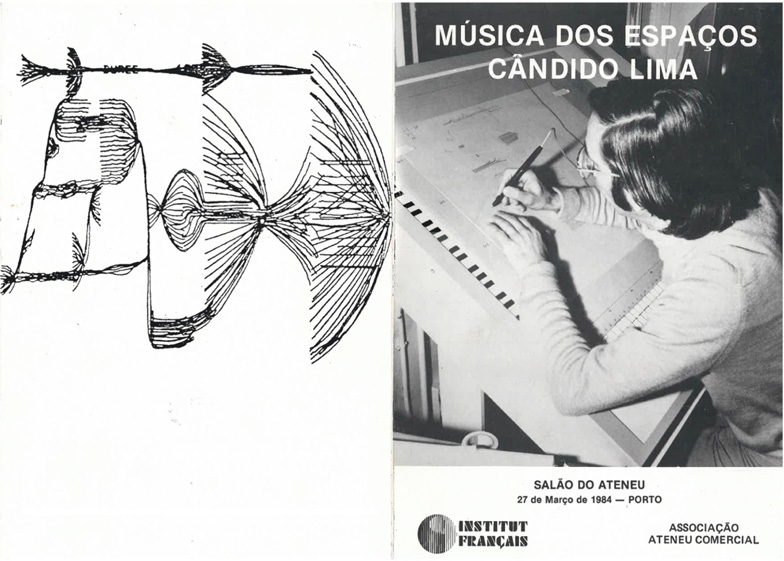
Fig. 29.7 Concert program from the Salão do Ateneu, Porto, 27 March 1984; (right): the author, composing on the UPIC system at CEMAMU outside of Paris (Issy-les-Moulineaux); (left): a UPIC “page” (a few seconds of music from the author’s work Autómatos da Areia, August 1978). Author’s private collection.
Portugal
IX: Portugal has been on my side for a very long time, especially, of course, the Gulbenkian Foundation. First, under the artistic direction of the divine Madalena Perdigão,16 who provided critical support, with commissions, and even money to develop the UPIC! Without the Gulbenkian, who knows when and even if we would have managed to build the first digital-to-analog converter in France in the very early 1970s! They alone made that possible for us. Later, under the brilliant direction of Luís Pereira Leal,17 commissions continued, and the Foundation’s orchestra often programmed my music in their annual festival, and invited many international artists and dedicatees as well to give the Portuguese premieres of solo and chamber works. If I remember correctly, the Gulbenkian commissioned seven or eight works, some of them amongst my most ambitious, such as Cendrées or Dämmerschein (1993–4).18 What was also really remarkable is that they were often generous enough to commission (or co-commission) new works while allowing them to be premièred first elsewhere.19
CL: And don’t forget about when they invited you to the Foundation to present the UPIC and organize workshops for both children and for local composers. […]
IX: Indeed, you were there too! Always faithful in promoting my work.20 Did I ever thank you? Well… now I am!
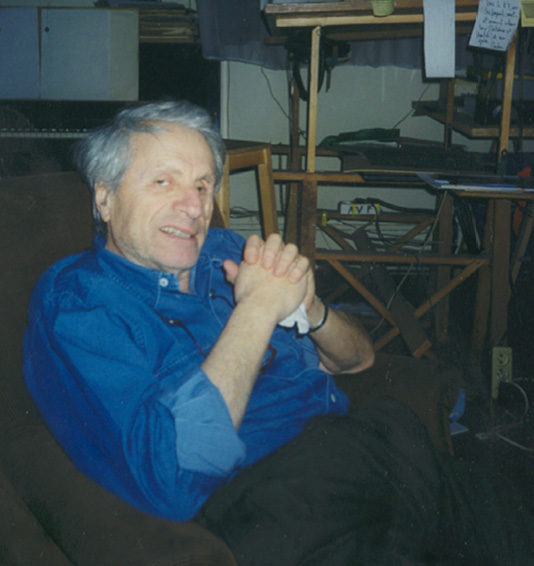
Fig. 29.8 Iannis Xenakis and his unforgettable smile in the composer’s studio, Rue Victor Massé, Paris, 1995. Photo by author.
References
BARBAUD, Pierre (1968), La Musique Discipline Scientifique: Introduction Élémentaire à l’étude des Structures Musicales, Paris, Dunod.
BOULEZ, Pierre (1963), Penser la musique aujourd’hui, Geneva, Gonthier.
BRANCO, João de Freitas (1973), “Dodecamusiquismo,” O Século, June 20.
DAWKINS, Richard (1995), River out of Eden: A Darwinian View of Life, London, Weidenfeld and Nicolson.
LIMA, Cândido (1982), Réflexions sur l’intuition et la rationalité en composition musicale: élements pour une nouvelle pédagogie, Doctorat de Troisieme Cycle, France, University of Paris I (Panthéon-Sorbonne).
LIMA, Cândido (1982), “Titans,” RTP2, https://arquivos.rtp.pt/conteudos/titans/
LIMA, Cândido (2001), “Xenakis et Pédagogie ou les Mythes,” in Makis Solomos (ed.), Présences de Iannis Xenakis, Paris, Cdmc.
LIMA, Cândido (2003), Origens e Segredos da Música Portuguesa Contemporânea – Música em som e imagem (third volume of the Doctorat d’État), Porto, POLITEMA-IPP.
LIMA, Cândido (2022), “Iannis Xenakis (1922–2011). No Centenário do seu Nascimento. Memórias do Compositor Cândido Lima,” in Rodrigo de Paula, Elisa Lessa, and Pedro Moreira (eds.), Paisagens Sonosras. O Som, a Música e a Arquitectura, Braga, University of Minho, p. 259–96.
XENAKIS, Iannis (1963), Musiques Formelles, Paris, Richard-Masse.
XENAKIS, Iannis (1968), Nuits, Les Solistes des Choeurs de l’O.R.T.F., dir. Marcel Couraud, Erato STU70457.
XENAKIS, Iannis (1969), Nomos Gama, Terretektorh, Philharmonic Orchestra of Radio O.R.T.F., dir. Charles Bruck, Candide CE31060.
XENAKIS, Iannis (1971a), Medea, Polytope, Syrmos, Ensemble Ars Nova, dir. Marius Constant, Erato STU70526.
XENAKIS, Iannis (1971b), Musique. Architecture, Tournai, Casterman.
XENAKIS, Iannis (1971c), Persephassa, Les Percussions de Strasbourg, Philips 6521020.
XENAKIS, Iannis (1978), Psappha, Sylvio Gualda. France, Erato STU71106 (Percussion Vol. 2).
XENAKIS, Iannis (1985), Eridanos (score EAS 17145), Paris, Salabert.
XENAKIS, Iannis (1988), Eonta, Metastasis, Pithoprakta, National Orchestra of O.R.T.F., dir. by Maurice le Roux, Ensemble Instrumental de Musique Contemporaine, dir. Konstatin Simonovic, piano Yuji Yakahashi. Le Chant du Monde LDC278368.
XENAKIS, Iannis (1992), Formalized Music: Thought and Mathematics in Music, additional material compiled and edited by Sharon Kanach, Hillsdale, New York, Pendragon Press.
XENAKIS, Iannis (2008), Music and Architecture: Architectural Projects, Texts, and Realizations, translated, compiled and presented by Sharon Kanach, Hillsdale, New York, Pendragon Press.
1 [Je ne suis pas mathématicien! Je ne fais pas de théorèmes !].
2 Such as the professors Júlio Fragata (1920–85), Vitorino de Sousa Alves (1915–2002), and Luís Archer (1926–2011).
3 Xenakis, 1985, excerpt from Composer’s Preface in the score (published in French and English).
4 Cf. Xenakis, 2008, p. 130 (Chapter 2.02 “Beautiful or Ugly”).
5 In Branco, 1973 [Mas o interlocutor era de boa qualidade. Insistiu por onde devia e Xenakis foi ao ponto de falar de homomorfismo].
6 [Problèmes actuels de la composition musicale].
7 [J’ai été frappé par le sérieux, la maturité de pensée et la responsabilité des étudiants de Porto, Coimbra, Braga. C’était une joie !].
8 [Composez ! Composez ! Il faut écrire ! Surtout musique de chambre. C’est plus facile de trouver moyen de la faire jouer. Faites de la musique !].
9 Arborescences are the generalization of polyphony, a technique used in Evryali (1973), for piano, Erikhthon (1974) for piano and orchestra, Cendrées (1973), for choir, countertenor, and orchestra.
10 Dawkins, 1995.
11 See Xenakis, 2008, Chapter 3.03.
12 See Xenakis, 2008, Chapter 3.10.
13 Certainly, Xenakis is referring to Balkrishna Doshi (1927–2023), who also worked in Le Corbusier’s studio for some time with Xenakis. The two remained friends throughout their lives.
14 Here, Xenakis must be referring to his friend who attended the Paris Conservatoire around the same time he was auditing Olivier Messiaen’s class there, the Japanese composer Toshiro Mayuzumi (1929–97).
15 Xenakis, 1992.
16 Her husband, José de Azeredo Perdigão, was the first acting President of the Gulbenkian Foundation and held that position from 1956 until 1993, the year of his death. Madame Perdigão held her position as Artistic Director through 1974.
17 Luís Pereira Leal became the head of the music department at the Gulbenkian Foundation in 1978 and held that position through 2010.
18 Chronologically, these were Nuits (1967), Cendrées (1973), Phlegra (1975), À Colone (1977), Tetras (1983), Ata (1987), and Dämmerschein (1993–4). Furthermore, several other works appear to have received some level of support from the Gulbenkian Foundation: Polytope de Cluny (1972), Psappha (1975), Kottos (1977), Gendy3 (1991), and Dox-Orkh (1991).
19 For example, Nuits was premiered at the Royan Festival in 1968, Phlegra was premiered in 1976 in London by the London Sinfonietta, and À Colone was premièred at the Metz Rencontres Internationales de Musique Contemporaine in 1977.
20 Indeed, from 1978 until today, the author, Cândido Lima, has been extremely active in promoting Xenakis’s music and thought through Portuguese national television and radio broadcasts, lectures, press articles and university seminars. Furthermore, and much to Xenakis’s personal delight, it was Lima’s personal and private recording of Xenakis’s defense of his Doctorat d’état in 1976 that led to the publication of Arts/Sciences: Alliages in 1979 (translated as Arts/Sciences: Alloys, published by Pendragon Press in 1985).
